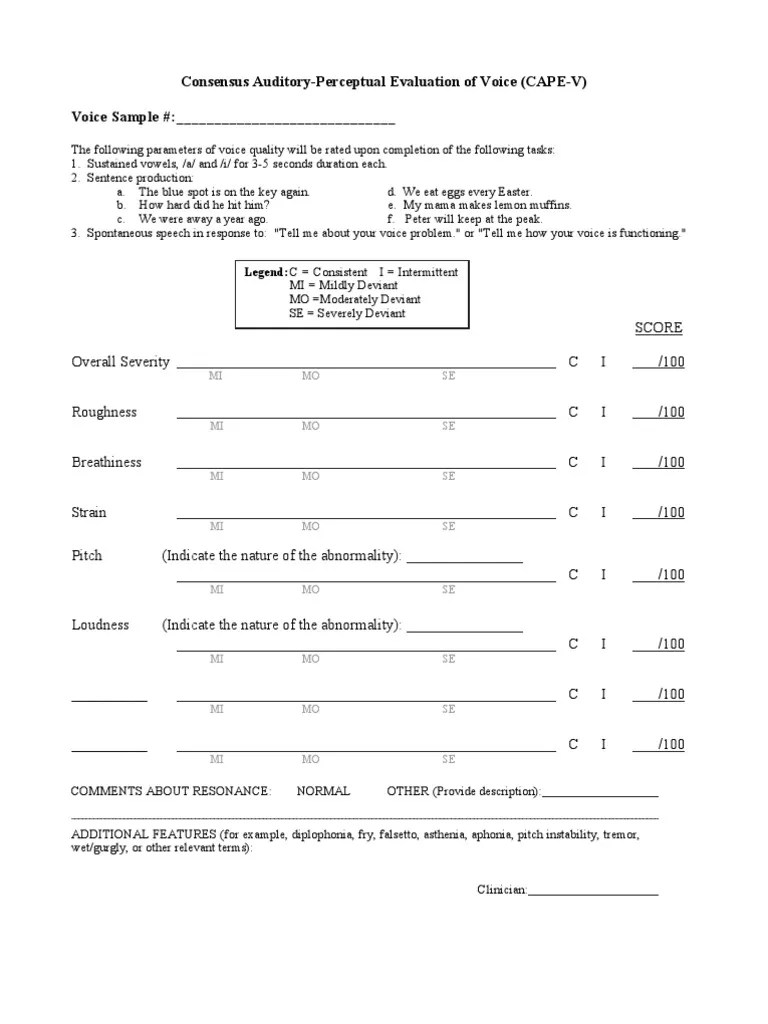Cape V Form - The clinician indicates the degree of perceived deviance from normal for each parameter on this scale, using a tic mark. Speech, language, and hearing scientists; (a) overall severity, (b) roughness, (c) breathiness, (d) strain, (e) pitch, and (f) loudness. For each dimension, scalar extremes are unlabeled.
Speech, language, and hearing scientists; (a) overall severity, (b) roughness, (c) breathiness, (d) strain, (e) pitch, and (f) loudness. The clinician indicates the degree of perceived deviance from normal for each parameter on this scale, using a tic mark. For each dimension, scalar extremes are unlabeled.









![CAPE v Form Instructions [PDF Document]](https://i2.wp.com/cdn.vdocuments.mx/img/1200x630/reader015/image/20180712/552d98374a7959065d8b4723.png?t=1600005932)